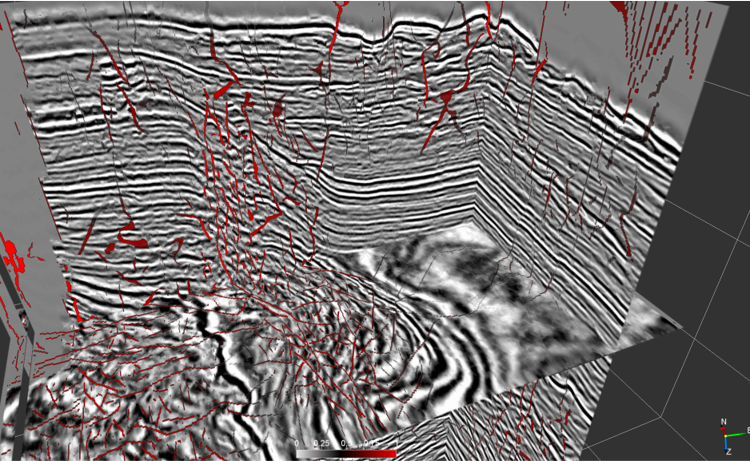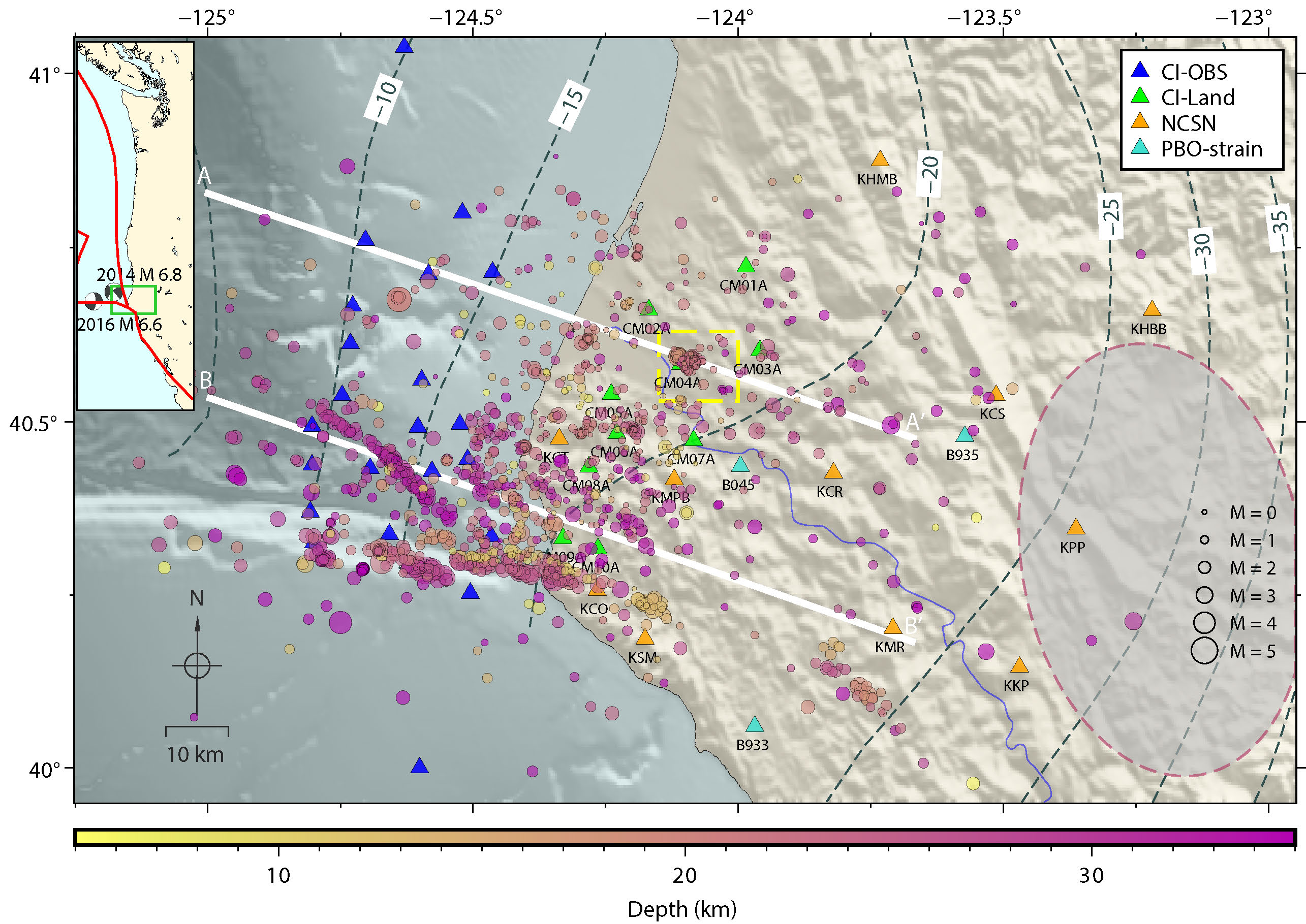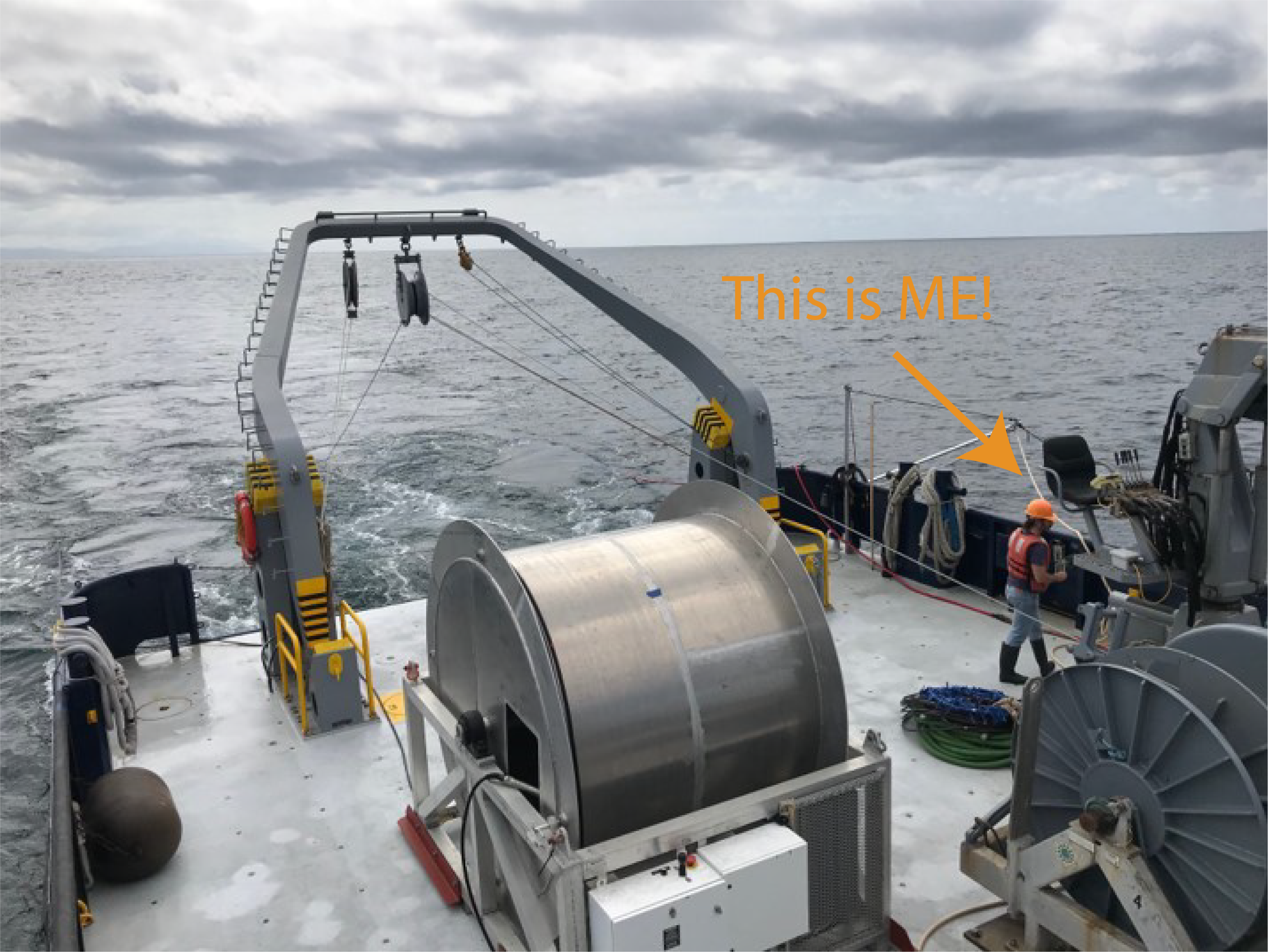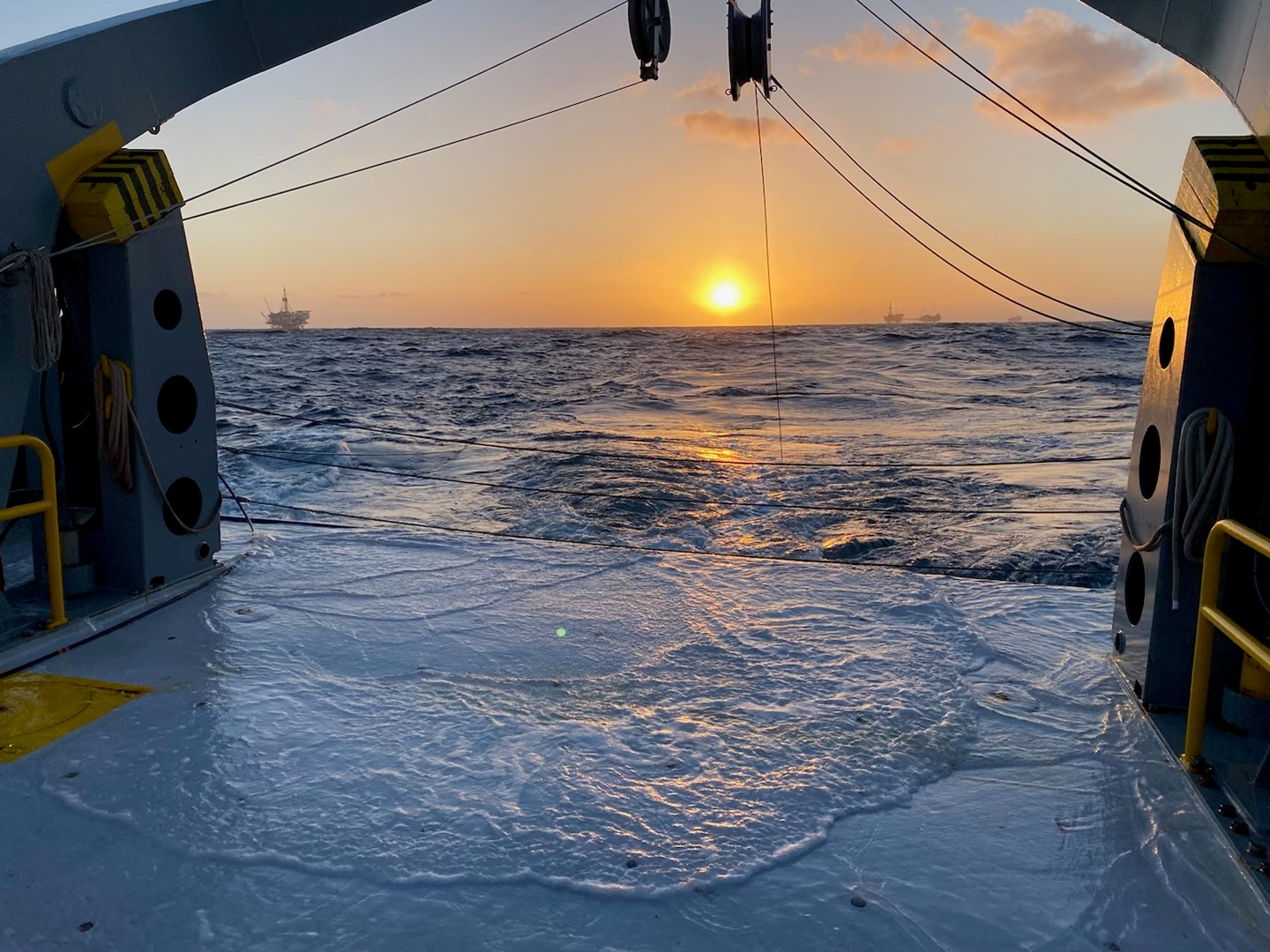Research
Reflection Seismology: 3D Fault Identification & Damage Zones
Three-dimensional fault networks and damage zone structure is poorly understood.
Using openly available 3D marine reflection seismic data I automate fault identification using modern seismic attribute methods.
I am working on quantifying the spatial relationship of the algorithmically identified fault and fractures network with mapped fault strands. I am exploring a lithological and/or depth dependence on fault damage.

Earthquake Seismology: Microseismicity & Slow Slip
Aseismic slow slip events are ubiquitious at plate bounding faults.
There is apparent correlations between aseismic strain transients (slow slip events) and microseismicity.
A detailed seismic study of earthquakes near the plate interface using an dense seismic array reveals a cluster of earthquakes (yellow box) that appear to be sensitive to nearby long term strain-transients.

Multi-Channel Seismic Processing
Modern advanced seismic processing techniques provide a high resolution image of the subsurface.
I am working on developing workflows that provide high quality seismic images, and utilizing new tools that reduce acquisition imposed artifacts and eliminate ghosts and multiples.
careful seismic processing helps to reduce noise aiding in identifying zones of active deformation and faulting.

Coming Soon– Palos Verdes (San Pedro Bay) high resolution Multi-Channel Seismic Lines


